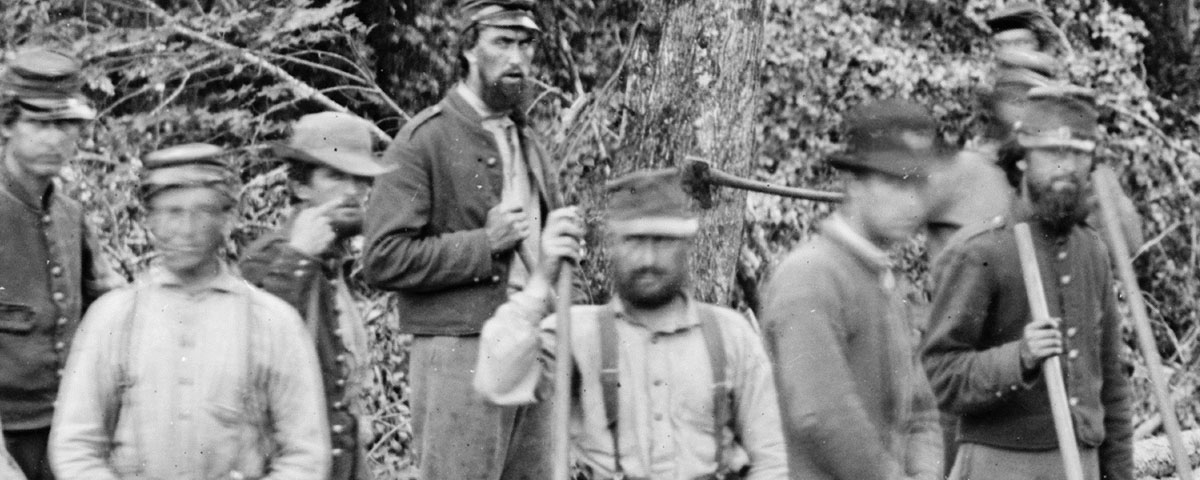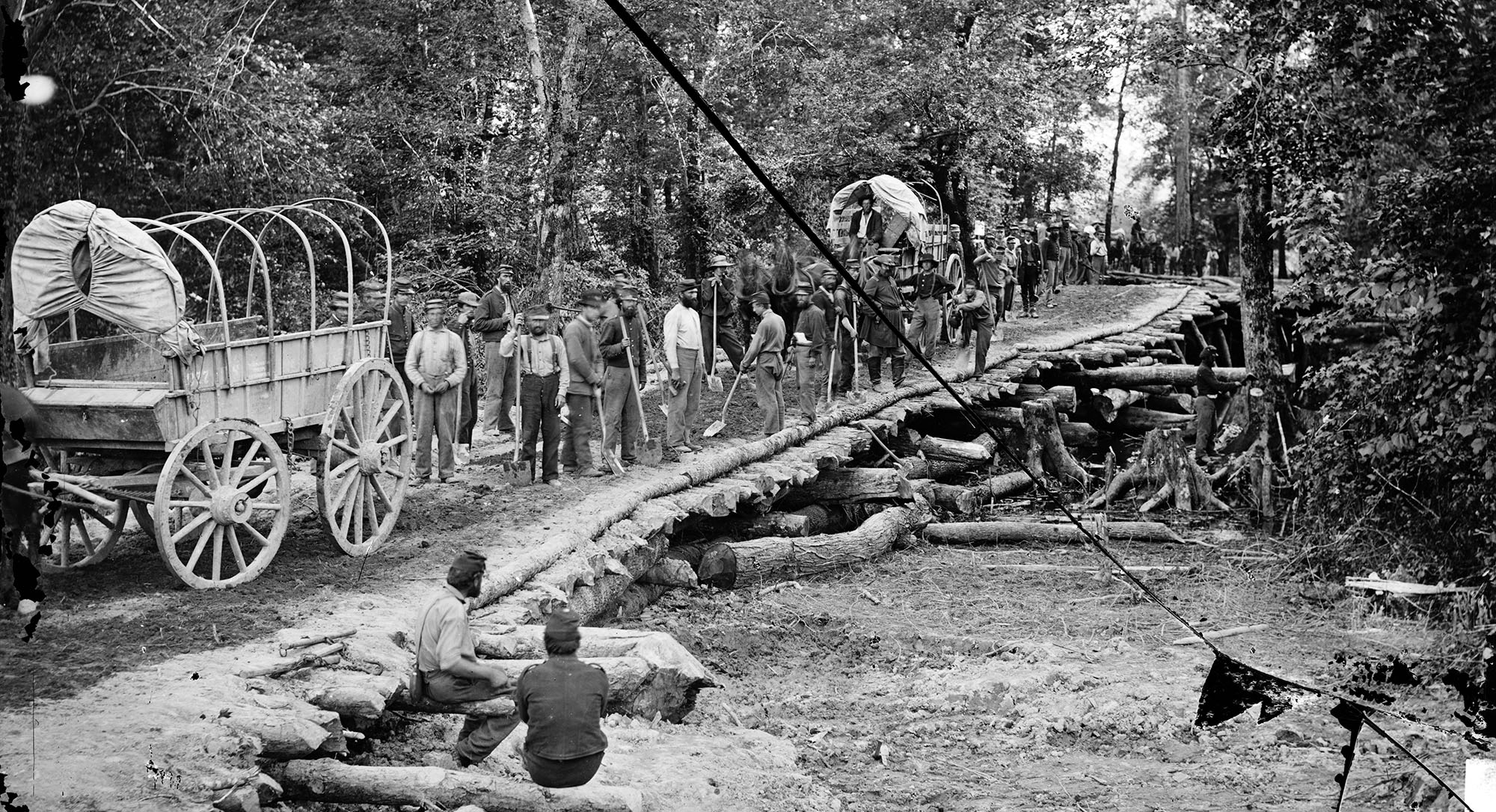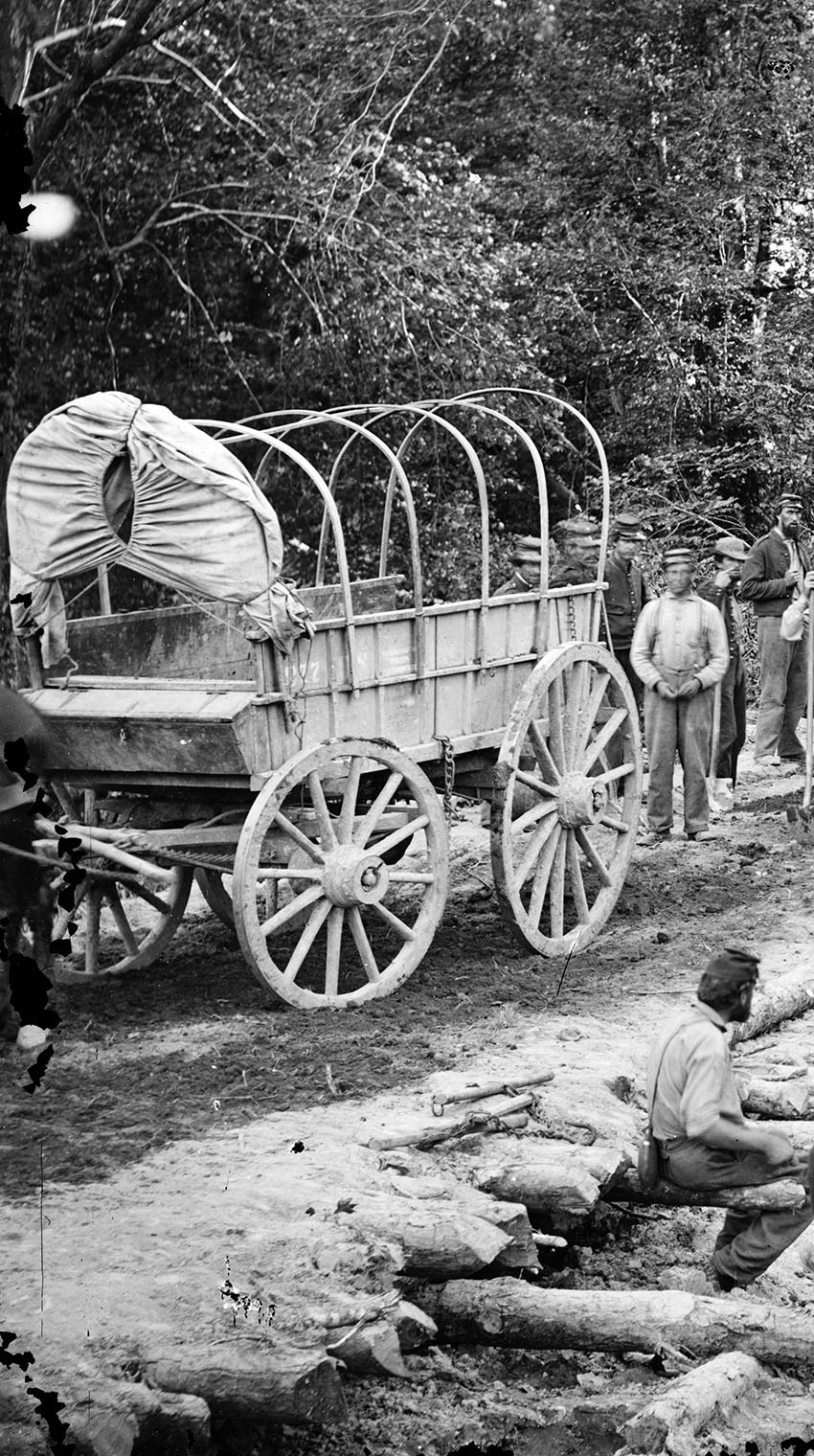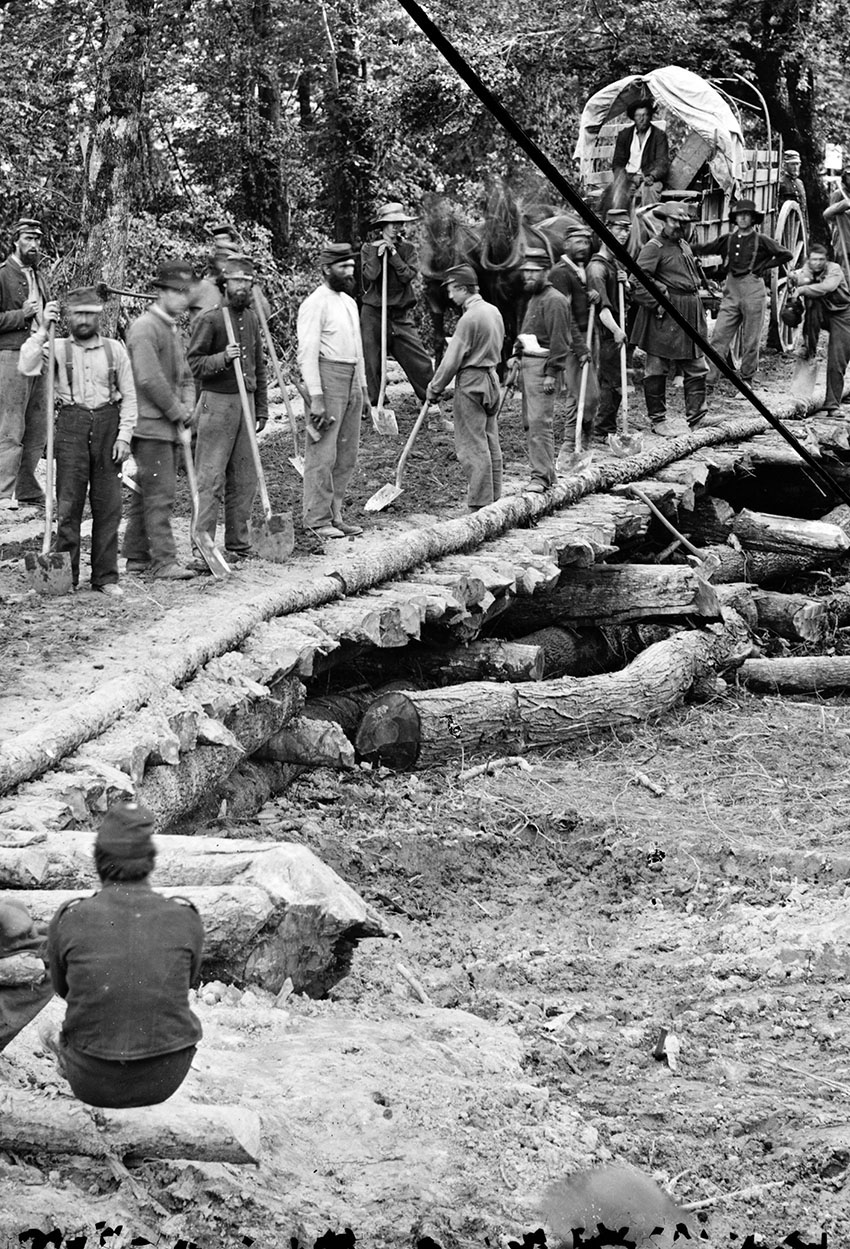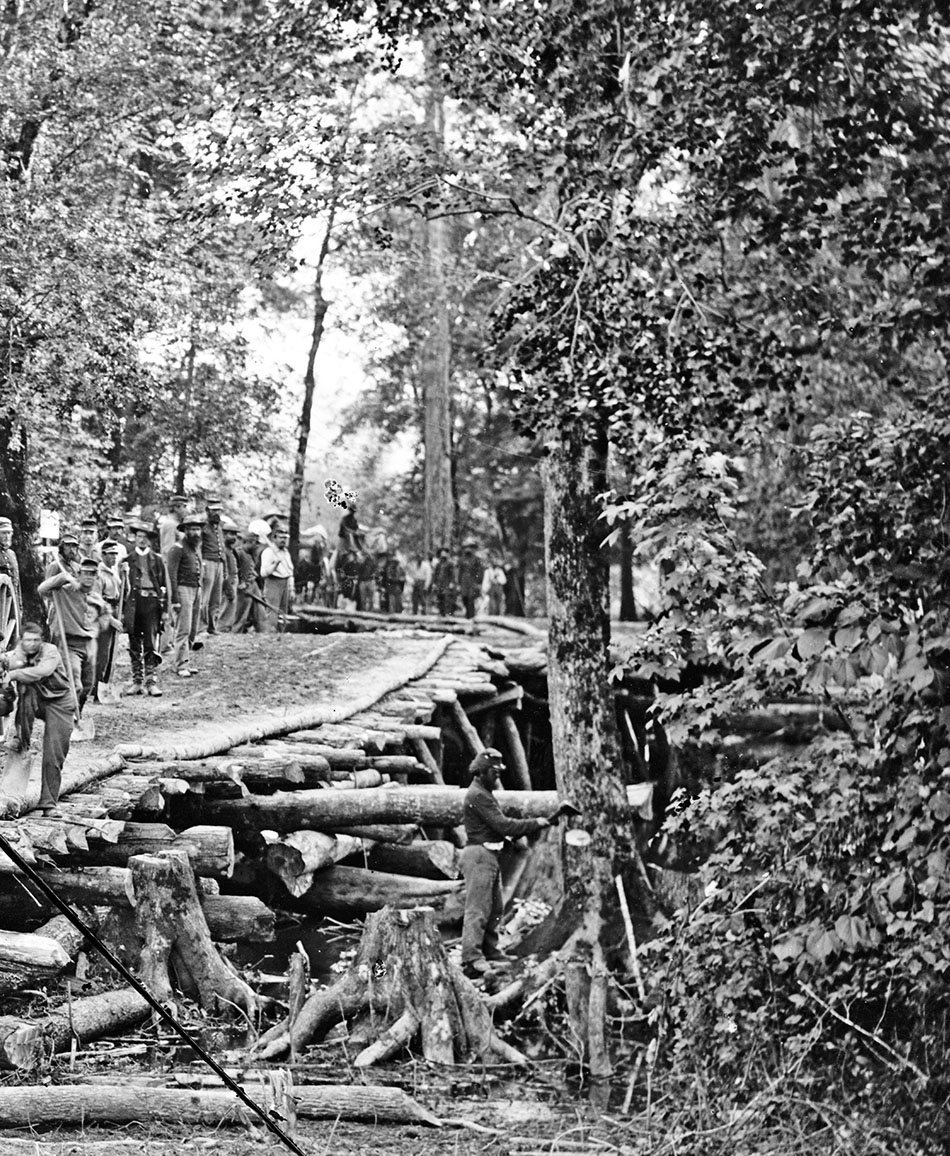You can almost hear the scraping of shovels and the chopping of axes as Union soldiers of the 5th New Hampshire infantry build a span known as the Grapevine Bridge across the Chickahominy River east of Richmond, in this image taken in late May 1862. That swampy, meandering river flowed between elements of Maj. Gen. George B. McClellan’s Army of the Potomac during the spring 1862 Peninsula Campaign, and the general ordered five bridges built to help keep the wings of his army connected. Photo: Library of Congress.
- Click for a larger view.
Here are the Details:
- A rugged army wagon stands on the bridge. Union wagons were about 10 feet long and 3.5 feet wide, with sides about 2 feet tall. Painted a light blue on the exterior with red interior, the wagons could haul around 3,000 pounds of cargo, and were supposed to be pulled by six mules. The canvas cover on this wagon is pulled back, likely because of the heat. A Union veteran called them “heavy, lumbering affairs,” but they were an essential component of army logistics.
- Most of the men wield shovels and spread dirt over the logs that form the bridge deck to provide an even surface. One man holds a hatchet, and axes can be seen stuck in the tree behind the soldier in the light-colored shirt with suspenders, and another ax is driven into a log just below the deck. A corpulent officer wearing a long, dark blue blouse keeps an eye on things. One can imagine these New England Yankees were not thrilled with building a bridge in the humid lowlands of the Virginia peninsula.
- Just off to the side of the bridge, a lone soldier turned lumberjack has started to chop at a tree, the mottled bark suggests it could be a sycamore. The work party goes on into the distance, indicating how many men it took to build the span. Despite the bridges, McClellan’s army retreated from this area after the June 27 Battle of Gaines’ Mill. During the ensuing Seven Days’ Campaign, the Army of Northern Virginia drove the Army of the Potomac eastward away from Richmond. It would take two years before a Union army once again got so close the Confederate capital.

